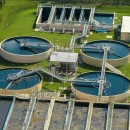
Interior and exterior design are two inseparable aspects of creating a harmonious home. Interior design, or often referred to as interior design, deals with the organization of space within a building. It involves the arrangement of furniture, the application of aesthetic elements, and the application of design principles to create a beautiful and functional atmosphere. In this case, interior designers have a central role in organizing elements such as lighting, texture, and layout to provide the desired comfort and impression.
On the other hand, exterior design focuses on the visual appearance of the building from the outside. The process of designing the outdoor space involves elements such as interior dividers, ceilings, openings, as well as the arrangement of finishing materials. Exterior designers are responsible for considering proportion, scale of space, and ventilation to ensure that the exterior design is not only aesthetically beautiful but also functional according to the physical and construction needs of the building.
The difference between interior and exterior design creates an interesting dynamic in the formation of a residence. While both have elements of fine art and design principles as a basis, the different focus on spatial organization, aesthetic elements, and functions of each discipline makes interior and exterior design one of the most sprawling branches of art that has a unique role in creating beautiful and functional environments.
Definition of Interior Design
Interior design is the process of planning and creating spaces within a building, taking into account factors such as function, beauty, and comfort. Interior design involves various elements such as furniture layout, lighting, wall color, texture, and decoration.
The main goal of interior design is to create a space that is functional, aesthetically pleasing, and can improve the quality of life of the occupants or users of the space. Interior design should consider the needs and lifestyle of the occupants, as well as ergonomics, safety, and comfort.
Interior design elements include visual and functional components that shape the atmosphere and aesthetics within a space. Some of the key elements include lighting, color, texture, pattern, furniture and accessories. The wise and harmonious use of these elements can create a space that is aesthetically pleasing, comfortable, and meets functional needs.
Interior Design Developments
The development of interior design reflects trends and evolution in approaches to the aesthetics and function of space. With various inspirations and cultural influences, interior designers continue to innovate to create styles and concepts that fit the times. A focus on sustainability, smart technology, and the integration of multifunctional living spaces are some of the latest trends in interior design development.
Interior Design Characteristics
Interior design is the process of designing and organizing spaces within a building to create a functional and aesthetic environment. Here are some important characteristics to know.
Interior design involves thinking deeply about how to organize and use the space within a building. This includes furniture arrangement, wall placement, and doors and windows to achieve maximum comfort and space efficiency.
One of the important aspects in interior design is to pay attention to ergonomics and user comfort. Interior designers must take into account the height of the table, the depth of the sofa, and the placement of good air circulation so that users can move freely and feel comfortable in the room.
Interior design also involves choosing the right materials, colors, and textures to create an atmosphere that matches the function of the space. For example, in a living room that has a function to relax, interior designers may choose soft and comfortable colors and use warm materials such as wood.
Definition of Exterior Design
In a design context, the term "exterior" refers to the visual and aesthetic aspects associated with the outside of a building, vehicle, or other object. Exterior design focuses on the outer appearance that creates a strong and attractive first impression.
The main goal of exterior design is to create a visually appealing impression that matches the function of the object. In achieving this goal, designers must consider various factors such as shape, color, texture, proportion, and other design elements.
Elements of Exterior Design
Exterior design elements involve everything that is visible on the outside of a building or property. It involves the selection of building materials, structures, windows, doors, gardens, layouts, and other architectural elements. Exterior design creates the visual identity of the building and influences the first impression received by visitors or occupants.
Exterior Design Developments
Exterior design developments include trends and innovations in the creation of the visual appearance of buildings or open spaces. Sustainability, energy efficiency, and environmentally friendly design are the main focus in the development of exterior design today. In addition, technology integration, innovative material selection, and a modern approach to spatial planning also play an important role in creating relevant and attractive exterior designs.
Exterior Design Characteristics
Exterior design has a very important role in creating an attractive and memorable building appearance. Here are some of the main characteristics that need to be considered in exterior design.
The shape of the building must be in accordance with the desired function and architectural style. The layout of the building must also be well thought out in order to maximize the function and beauty of the building. In addition, the selection of visual elements such as windows, doors, and other architectural details also has an important role in creating a good aesthetic impression.
For example, for traditional style buildings, the selection of materials such as wood or natural stone may be more suitable, while for modern buildings, materials such as concrete or metal can be the right choice.
In addition, the choice of exterior texture can also give the building unique characteristics, such as rough texture for a bolder effect or smooth texture for an elegant impression.
The choice of colors that are harmonious with the surrounding environment can create a harmonious impression and blend with the surrounding nature. For example, for buildings in the countryside, neutral colors such as brown or leaf green can give a natural and harmonious impression. Meanwhile, in urban areas, brighter and more modern colors such as gray or blue may be more suitable.
The Difference Between Interior and Exterior Design
We will compare the differences between interior and exterior design, as well as provide some design examples that demonstrate the differences. Let's start by considering some of the key differences between interior and exterior design.
The focus of the room
First of all, the focus of interior design is on the spaces within the building. This includes spaces such as bedrooms, living rooms, kitchens, bathrooms, and others. Interior designers consider aspects of the room.
Such as furniture arrangement, color selection, lighting, and texture to create a comfortable and functional environment for the occupants. They also have to consider the needs and preferences of the users in the room.
On the other hand, exterior design focuses on the visual appearance of the outside of the building. It involves elements such as the shape of the building, materials used, exterior textures, and exterior layouts such as gardens and courtyards.
Exterior designers strive to create a visual impression that is attractive and harmonious with its surroundings. They also consider factors such as climate, surrounding environment, and existing architectural styles.
User comfort
Interior design also pays attention to the comfort of the users in the room. For example, the selection of ergonomic furniture, proper lighting, and good air circulation are very important things in interior design. Interior designers must ensure that the room can fulfill the needs of the occupants well.
On the other hand, exterior design has more focus on the visual impression from the outside. The goal is to create a building that is attractive and enchanting to anyone who sees it. Attention is given to the elements of the exterior.
Such as exterior lighting, proper use of colors, and harmonious layout. Exterior designers must ensure that the building reflects the desired character and style.
In practice, the difference between interior and exterior design can be clearly seen. For example, in interior design, we can see the selection of comfortable and functional furniture, efficient spatial arrangement, and color selection in accordance with user preferences.
While in exterior design, we can see the visual impression produced by the shape of the building, the use of different materials, and attractive lighting.
The conclusion we can draw is that the difference between interior and exterior design is very important to understand. Both have equally important roles in creating a harmonious, functional and visually appealing space. By understanding both, we will be able to better plan and execute design projects, and achieve satisfactory results.



